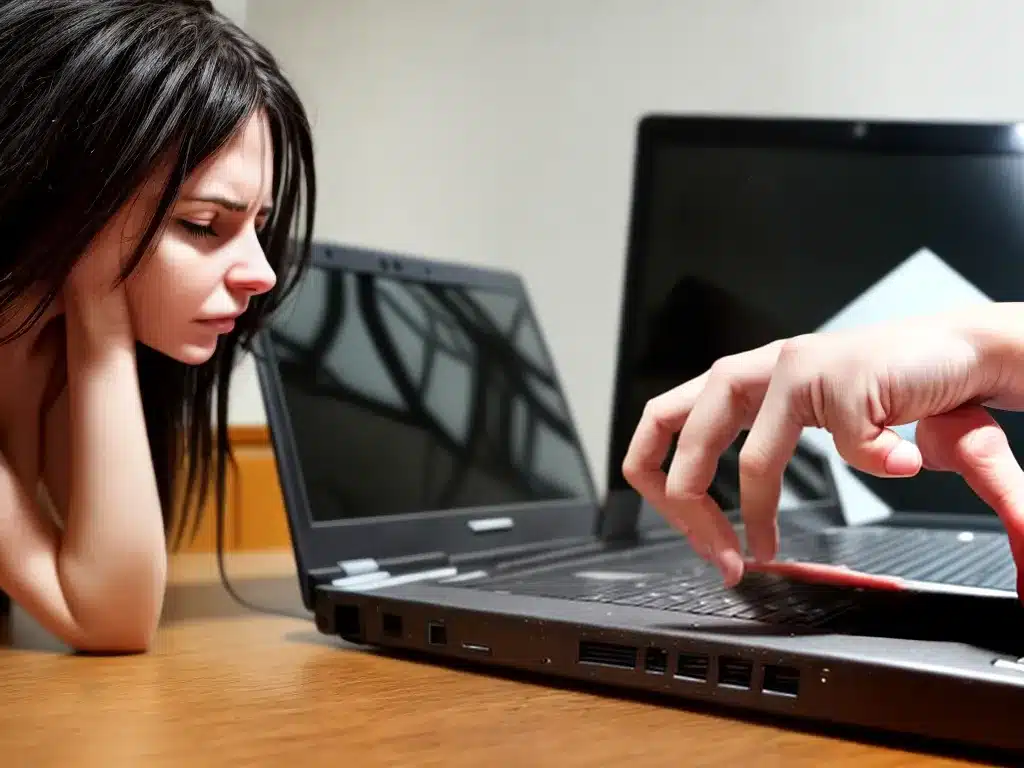
Introduction
A laptop that won’t turn on can be frustrating. However, there are several troubleshooting steps you can try to get it working again. In this article, I will walk you through the common reasons a laptop won’t power on and provide solutions to try at home before taking it in for professional repair.
Check the Power Supply and Battery
The first thing to check is the power supply and battery.
-
Make sure the AC adapter is plugged into the wall outlet and laptop firmly. Loose connections can prevent power from flowing properly.
-
Inspect the AC adapter for damage to the cord or adapter box. Fraying, cuts, or burns can cause an interruption in power delivery. If damaged, you’ll need a replacement adapter.
-
Plug the AC adapter directly into the laptop, bypassing any connectors or power strips which may be faulty.
-
Check the laptop battery to ensure it is installed correctly and charged. Remove and reseat the battery to make a solid connection. Try starting the laptop solely on battery power. If the battery is depleted, plug in the AC adapter to charge it.
-
Test the AC adapter with a voltmeter to verify it is outputting the expected voltage (typically 19-20v). Inadequate voltage can prevent startup.
If the laptop still won’t start up with a verified working AC adapter and charged battery, the problem likely lies deeper within the laptop itself.
Try a Hard Reset
If the power supply checks out, try doing a hard reset:
-
Unplug the AC adapter and remove the battery. This will force the laptop to fully power down.
-
Press and hold the power button for 30 seconds to discharge any residual electricity from the capacitors.
-
Reconnect the battery and AC adapter, then attempt to turn on the laptop.
This complete power drain often resolves booting issues caused by software glitches or electrical discharge buildup.
Check RAM and Internal Connections
The next troubleshooting step is to check the RAM and internal connections:
-
Remove and reseat the RAM modules in their slots. Improper installation can prevent electrical contact. Wipe the gold pins with an eraser before reinstalling.
-
Try booting the laptop with only one RAM stick installed. Switch sticks to test each one individually. This can isolate a faulty module.
-
Check that the hard drive and any removable batteries or connections are fitted properly in their bays. Loose fittings can break electrical contacts.
-
Check for issues like loose screws or damaged ports and connectors. Cracked motherboard connections could be interrupting power flow.
Reset the CMOS Battery
Another technique is resetting the CMOS battery:
-
Open the cover to access the motherboard and locate the coin-sized CMOS battery. It will be mounted in a holder.
-
Remove the CMOS battery from its holder for at least 15 minutes. This clears saved BIOS settings which could be causing startup issues.
-
Reinsert the CMOS battery and close the cover before attempting to boot again.
Resetting the CMOS can resolve problems caused by changes to BIOS settings or corrupted settings memory.
Test Individual Components
If the laptop still fails to boot, more individual component testing is required:
-
Connect the hard drive to another computer as an external drive to check if it’s detected properly. This will verify if the storage drive is faulty.
-
Swap RAM sticks with a known good stick from another laptop to isolate problems. Incompatible or bad memory can prevent booting.
-
Try removing non-essential components like optical drives to check if they are causing an issue. Less hardware makes troubleshooting easier.
-
Check that none of the hardware ribbon cables inside are damaged or disconnected from their sockets. Loose or torn cables will cause component failures.
Thoroughly testing individual components this way can determine what exactly has failed inside the laptop.
Seek Professional Repair
If you have tried all of the above troubleshooting without success, the laptop will need professional repair:
-
Take the laptop to a repair shop and describe the power issue along with the troubleshooting steps you performed. This will help the technician quickly diagnose the problem.
-
Be prepared to replace faulty components like the motherboard or power jack. Age or damage may make parts non-functional.
-
For older laptops, compare the cost of repairs versus buying a new laptop. Extensive repairs on an aging laptop may not be cost-effective.
-
Back up important data before taking it in for repair. Failed components always risk data loss scenarios.
Professional laptop repair technicians have the skills and tools to fully diagnose and fix boot failures in cases where at-home troubleshooting hits a dead end.
Conclusion
While a laptop that refuses to power on can be worrying, there are many DIY troubleshooting steps you can try at home first before taking it in for service. Ensure the AC adapter, battery, and internal connections are solid. Try resets and component swaps to isolate the failure. If needed, seek professional assistance to pinpoint and replace any faulty parts. Thorough troubleshooting helps get your laptop up and running again quickly.












